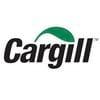Lessons Learned From a 10,000-Cow California Dairy Regarding HPAI
Published: June 6, 2025
By: https://www.dairyherd.com/
Zonneveld Dairies, Inc., a 10,000-cow dairy operation in California, provides valuable insights from their experience navigating HPAI
At the forefront of the dairy industry, Jacob Zonneveld, president and CEO of Zonneveld Dairies, Inc., boldly navigates challenges as he openly shares his experiences with Highly Pathogenic Avian Influenza (HPAI). With a sprawling operation of 10,000 cows and an equivalent number of replacement heifers spread across 6,600 acres in Laton, Calif., Zonneveld offers invaluable insights into managing this daunting threat.
The Onset of HPAI
In October, HPAI made its presence felt in the vicinity of Zonneveld Dairies, spreading rapidly despite limited resource sharing. The outbreak underscored the complexities of biosecurity measures, especially for dairies. Zonneveld points out the challenges in preventing birds from accessing feed piles, emphasizing the role of biosecurity in treating infected cows, rather than prevention.
Jason Lombard, DVM, Veterinary Epidemiologist with Colorado State University concurs, saying that segregating animals is good for treatment, but it’s inevitable that the disease will spread from pen to pen.
Zonneveld recounts their initial approach with drenching, ultimately leading to more challenges than solutions for the cows. At the 2025 California Dairy Sustainability Summit in Visalia, he detailed their shift to a treatment protocol focused on identifying symptomatic cows through signs like milk loss, runny noses, and respiratory distress.
“We did try drenching them first but felt that just kind of caused more problems than benefits to the cows,” he said. “What we ended up doing is giving an energy bolus and electrolytes as well as a couple of natural anti-inflammatory boluses. About 25% of our total herd was treated with these methods of treatment.”
Impact on Production
The California dairy farmer shared that November marked the peak impact of the epidemic, with milk production dropping by 15%. Today, production remains slightly below last year’s levels. Interestingly, Zonneveld Dairies, where cows reside in both freestall barns and open corrals, noted greater impacts among cows in freestalls, according to their comparative analysis of energy-corrected milk production.
“Treated cows tended to have higher levels of production beforehand,” Zonneveld observes, suggesting that higher-producing cows bore the brunt of HPAI. The farm’s data indicates that untreated cows had a 20-pound milk recovery from their production lows, while treated cows rebounded with a 38-pound increase.
“That’s pretty significant,” he says. “So, basically, cows that are severely impacted by the bird flu likely benefited from those treatment protocols that we had, but we’re still evaluating the long-term effect and whether more treatment could have been done.”
The insights gained prompted Zonneveld to consider more extensive treatment protocols in future HPAI incidents. While acknowledging the difficulty, he believes in the benefits.
“Maybe we treat more cows, even though it’s a pain. It seems to be worth doing some of those things,” he reflects.
As Zonneveld and his team continue evaluating and refining their strategies, they provide a beacon of learning for other dairy operations facing similar challenges. The ongoing analysis of these treatments not only enhances their preparedness but also underscores the importance of adaptive management in the face of HPAI and other agricultural threats.
Source
https://www.dairyherd.com/Related topics:
Recommend
Comment
Share

Would you like to discuss another topic? Create a new post to engage with experts in the community.






